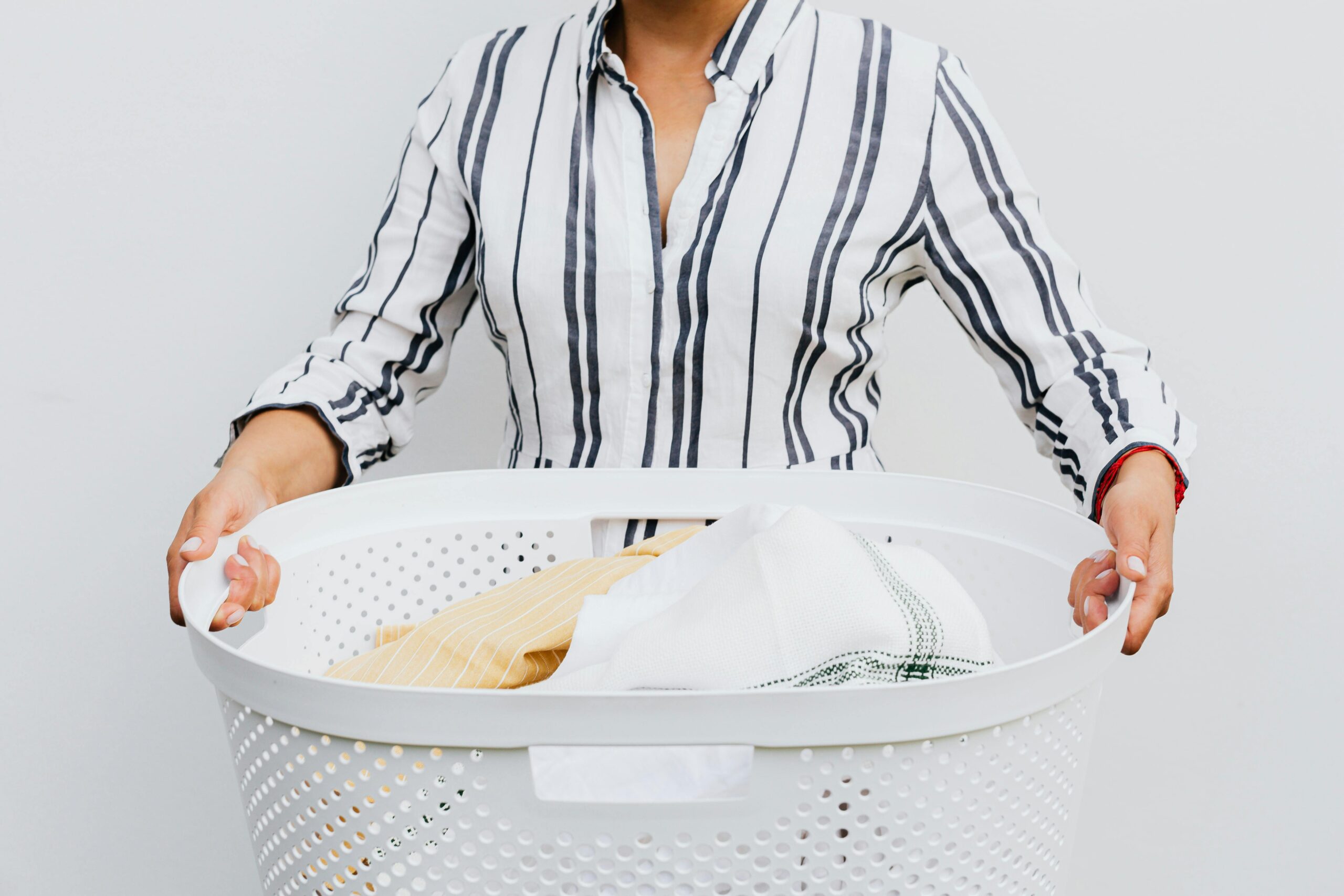Usually, I tell my kids to not be so dramatic or hyperbolic when they say they “hate” something, but honestly, I hate laundry. Really, truly, despise it. Perhaps that’s why I didn’t learn how to do it until I went to college. Even then, after my friend’s one miserable attempt at teaching me how to use the quarter-hungry machines in the dorm basement, I resorted to dragging my dirty clothes home on weekends.

Don’t Repeat the (Unwashed) Cycle
My sons are 10, 12, and 14, and I don’t want them to go to college without knowing how to do laundry (and I’d rather them not bring it home to me). And I definitely don’t want them to be like this other kid I knew in college, who believed fabric refresher spray was an acceptable substitute for washing. IT WAS NOT.
Aside from the practical reasons for teaching my kids how to do laundry, I found some really interesting research that says “children who were given chores became more independent adults” (Michigan State University Extension, 2017, para. 13). The American Academy of Child & Adolescent Psychiatry echoes that sentiment: “children who do chores may exhibit higher self-esteem, be more responsible, and be better equipped to deal with frustration, adversity, and delayed gratification. These skills can lead to greater success in school, work, and relationships” (Chores and Children, 2018, para. 1). Well, that about sums up what I want for my kids, so if chores can contribute to that greater goal, then chores are what they shall do.
It All Comes Out In the Wash
In my current course, I had to make a video (here it is, if you want to check it out) as part of an assignment. I chose to make an instructional video on how to do the laundry. My 12-year-old is the target audience because he is literally in the chronological middle. I also made design choices (images, music, title, etc.) that I thought might resonate with him. This was as much for my learning as it was for my sons’. Here’s why:
They Are My Guinea Pigs
Typically when I want to teach my boys a household task, I use “modeling,” about which Schunk says, “By observing others (models), people acquire knowledge, rules, skills, strategies, beliefs, and attitudes” (Schunk, 2020, p. 125). The idea of modeling is central to social cognitive theory, which also says that “much human learning occurs in a social environment” (Schunk, 2020, p. 125). My family is a micro social environment and much of the learning my kids do can be explained by social cognitive theory.
So Then Why Video?
Here’s an interesting fact about my kids: I have explained, shown, watched and corrected WHILE they are doing it, and have eventually re-done it myself until I’m blue in the face. Not the laundry – loading the dishwasher. No matter how I try to teach them, it just doesn’t seem like it’s sinking in. With all of those failed instructional strategies with the dishwasher, for the laundry lesson, I thought, “Maybe it’s time to try something new?”
Diving deeper into the cognitive learning theories family, we come to some very interesting processes, like problem solving, metacognition (which is basically thinking about thinking), and how online technology can be integrated into the learning process. My kids love anything to do with screens and technology. How can I leverage that to teach them how to do laundry, so I can avoid a dishwasher-style NON-learning situation?
Flipped Classrooms, Novices, & Experts, Oh My!
In an effort to improve learning outcomes, I turned again to my previous class’s textbook, Learning Theories, by Dale Schunk. In it, he says, “In a flipped classroom, content is studied at home from multimedia (e.g., online videos that the instructor has posted); the next class session focuses on discussion and other activities based on the homework and that explores concepts at a deeper level” (Schunk, 2020, p. 297). This could be an interesting approach to teaching a household task. In my context, the flipped classroom is actually my home. The multimedia content is the video I made. My boys watched it as the first step in this instructional process.
Next, they’ll do the laundry with me, which will be similar to on-the-job training, which is using novice-to-expert methodology (Schunk, 2020). The novice-to-expert idea is basically that the novices (my kids) will “closely study someone who performs that skill well” (Bruner, 1985, as referenced in Schunk, 2020, p. 255), ideally transitioning my kids from novice level to expert. Maybe I should present that part in video game terms for them…
Who’s Doing the Wash?
I’m still doing the laundry currently. But with spring sports ramping up (I have one running track, one in baseball, and one playing lacrosse) and the NFL draft around the corner, I’ll just say: my kids are on the clock.
Chores and Children. (2018, June). American Academy of Child & Adolescent Psychiatry. Retrieved April 10, 2024 from https://www.aacap.org/AACAP/Families_and_Youth/Facts_for_Families/FFF-Guide/Chores_and_Children-125.aspx
Grabowska, K. (2020, July 26). Woman holding laundry basket. [Photograph]. Pexels. https://www.pexels.com/photo/woman-holding-laundry-basket-4959879/
Judkins, R. (2024, March 23). Keeping Your ‘Fit Fresh. [Video]. YouTube. https://youtu.be/Dx_fSpwNiUY
Schunk, D. H. (2020). Learning theories: An educational perspective (8th ed). Pearson.
Trautner, T. (2017, October 17). The benefits of chores for your child. Michigan State University Extension. Retrieved April 10, 2024 from https://www.canr.msu.edu/news/the_benefits_of_chores_for_your_child

